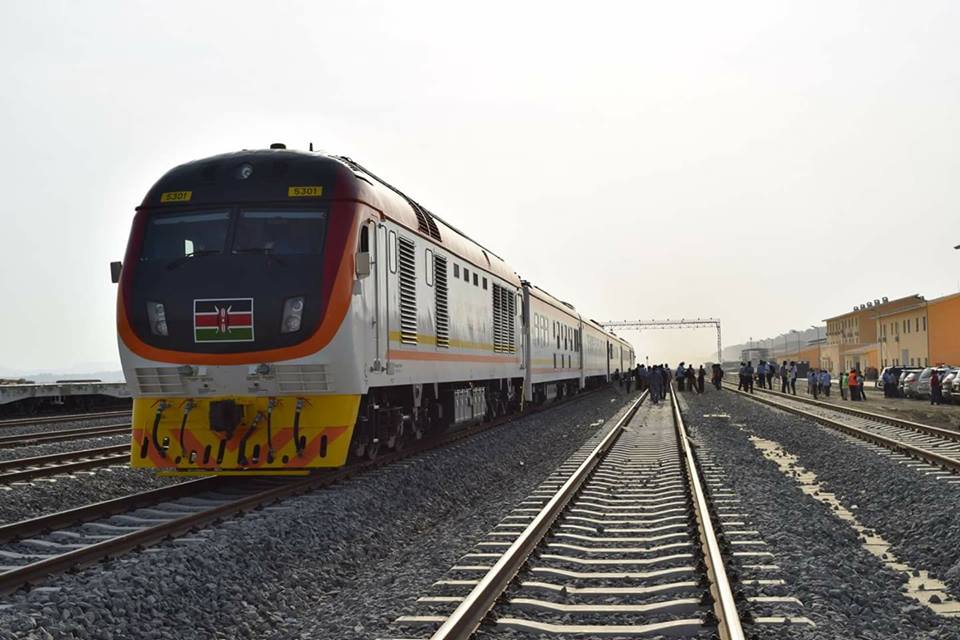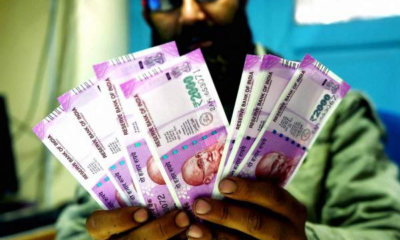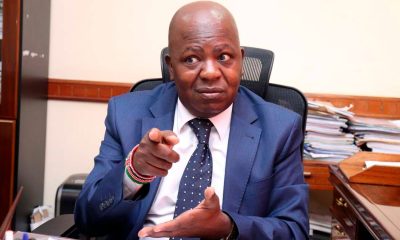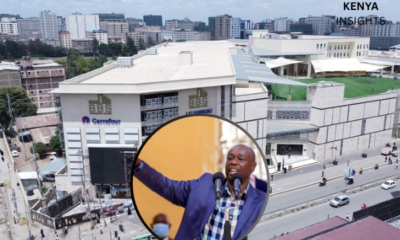Development
Kenya to Hand Over Naivasha-Malaba SGR Operations to Private Investor
The ambitious project, spanning from Naivasha to Kisumu and onward to the Ugandan border at Malaba, carries an estimated price tag of Sh645.95 billion

Government shifts strategy to ease financial burden of Sh645.95 billion railway extension
Kenya plans to transfer operations of the upcoming Standard Gauge Railway (SGR) extension from Naivasha to Malaba to private investors, marking a significant departure from the state-led approach that characterized the initial phases of the mega infrastructure project.
Transport Cabinet Secretary Davis Chirchir announced the strategic shift yesterday, revealing that while the government will finance railway infrastructure development, private investors will supply and operate rolling stock including locomotives, passenger coaches, and freight wagons for the two-phase extension.
The ambitious project, spanning from Naivasha to Kisumu and onward to the Ugandan border at Malaba, carries an estimated price tag of Sh645.95 billion ($5 billion). This represents a substantial financial commitment that the government seeks to reduce through private sector participation.
“We have a framework where we are seeking to commercialise aspects which are profitable,” Chirchir explained during the Northern Corridor Transit and Transport Coordination Authority meeting in Nairobi. “With that investment of $5 billion, we will be looking to reduce the portion that would otherwise go to freight: buying the engines, buying the bogies and the rolling stock.”
Under the proposed arrangement, private investors will recover their investments through passenger and freight charges while paying the state a fee for utilizing the modern railway infrastructure and stations. The government will retain responsibility for core infrastructure including tracks, stations, control centers, signaling systems, tunnels, and level crossings.
This public-private partnership model comes as Kenya grapples with mounting Chinese debt obligations. Outstanding loans to China stood at Sh692.6 billion as of December 2024, primarily comprising debt from the Mombasa-Nairobi SGR section completed in 2017.
The original SGR, linking Mombasa and Nairobi, cost $3.8 billion (Sh490.92 billion) and was largely financed through a 90 percent loan from China Exim Bank. Phase 2A, extending the line from Nairobi to Naivasha, was completed in October 2019 at $1.5 billion (Sh193.78 billion).
However, the railway’s journey stalled in Naivasha after China shifted focus away from funding large-scale infrastructure projects, leaving the line 468 kilometers short of the Ugandan border. This abrupt termination has disrupted plans to efficiently transport cargo to landlocked neighbors including Uganda, Rwanda, Burundi, and the Democratic Republic of Congo.
The proposed extension comprises two phases: Phase 2B will connect Naivasha to Kisumu over 262 kilometers, traversing Narok, Bomet, Kericho, Nyamira, and Kisumu counties. Phase 2C will cover 107 kilometers from Kisumu to Malaba, cutting through Kisumu, Vihiga, Siaya, Kakamega, and Busia counties.
Chirchir confirmed that preparatory work is already underway, with feasibility studies and route mapping completed. Land compensation for affected residents has commenced, indicating the government’s commitment to moving forward with the project.
The shift toward private sector involvement reflects Kenya’s broader strategy of embracing public-private partnerships amid constrained fiscal space. The government has increasingly turned to PPPs for major infrastructure projects, including road tolling systems.
For the railway sector, Kenya plans to adopt a freight concession model, granting private investors exclusive rights to operate cargo services on the publicly owned railway line for a fixed period under agreed terms.
“We are seeking a freight concession. The way we build a road and people can buy their vehicles and run on it—we will build the rail, get investors to do the rolling stock, and concession the freight,” Chirchir explained.
The SGR has shown steady revenue growth, booking Sh18.08 billion in revenue last year, with freight services generating Sh13.98 billion and passenger services contributing Sh4.1 billion. This performance demonstrates the commercial viability that could attract private investors to the extended line.
Treasury Cabinet Secretary John Mbadi has indicated that Kenya is pushing for China to fund the entire project, following President William Ruto’s state visit to Beijing in April. However, China’s retreat from large-scale infrastructure lending under its Belt and Road Initiative has prompted a shift toward smaller, commercially viable investments and PPPs.
Despite reduced direct lending, Chinese firms continue to dominate Kenya’s PPP landscape. Companies like China Road and Bridge Corporation, which built both the existing SGR and the Nairobi Expressway, leverage state-backed financing and rapid execution capabilities to secure major infrastructure contracts.
The success of this privatization model could set a precedent for future infrastructure projects in Kenya, potentially reducing the government’s debt burden while maintaining momentum on critical connectivity projects that link the country to its regional neighbors.
Kenya Insights allows guest blogging, if you want to be published on Kenya’s most authoritative and accurate blog, have an expose, news TIPS, story angles, human interest stories, drop us an email on [email protected] or via Telegram
-

 Investigations1 week ago
Investigations1 week agoBillions Stolen, Millions Laundered: How Minnesota’s COVID Fraud Exposed Cracks in Somali Remittance Networks
-

 News1 week ago
News1 week agoUS Moves to Seize Luxury Kenya Properties in Sh39 Billion Covid Fraud Scandal
-

 Investigations1 week ago
Investigations1 week agoJulius Mwale Throws Contractor Under the Bus in Court Amid Mounting Pressure From Indebted Partners
-

 News1 week ago
News1 week agoMAINGA CLINGS TO POWER: Kenya Railways Boss Defies Tenure Expiry Amid Corruption Storm and Court Battles
-

 Business2 days ago
Business2 days agoEastleigh Businessman Accused of Sh296 Million Theft, Money Laundering Scandal
-

 Americas1 week ago
Americas1 week agoUS Govt Audits Cases Of Somali US Citizens For Potential Denaturalization
-

 Business2 days ago
Business2 days agoEXPLOSIVE: BBS Mall Owner Wants Gachagua Reprimanded After Linking Him To Money Laundering, Minnesota Fraud
-

 Business1 day ago
Business1 day agoMost Safaricom Customers Feel They’re Being Conned By Their Billing System
















